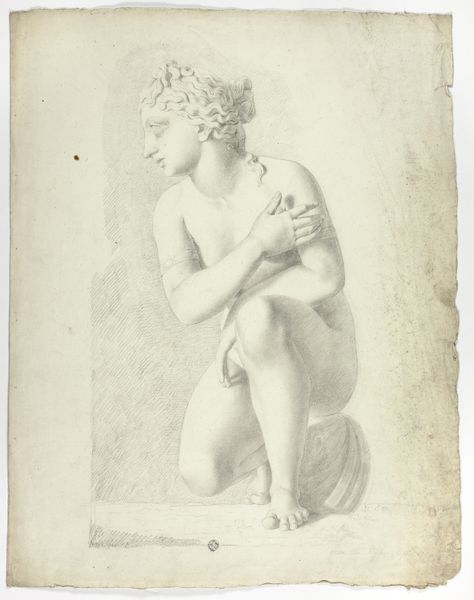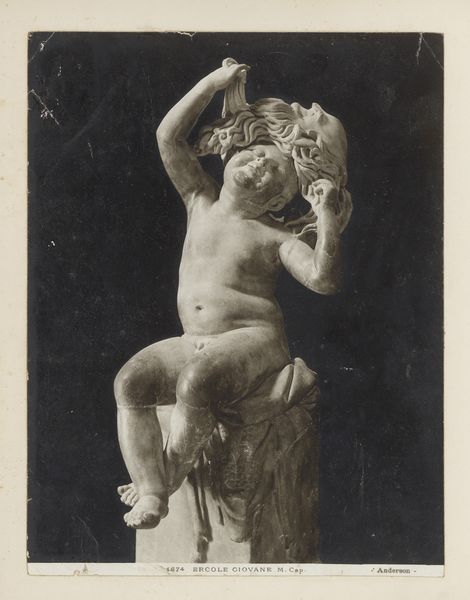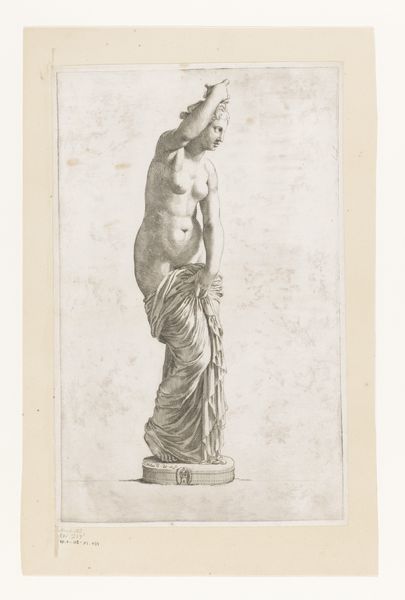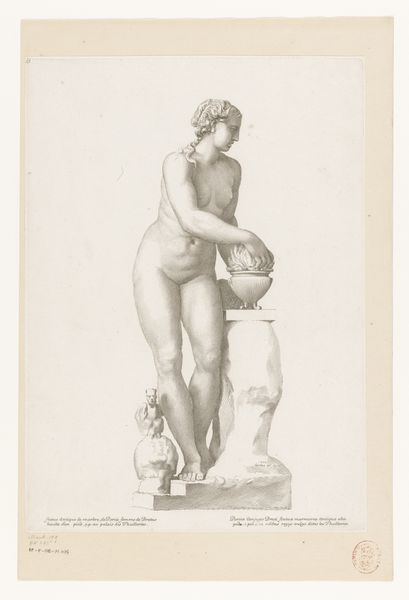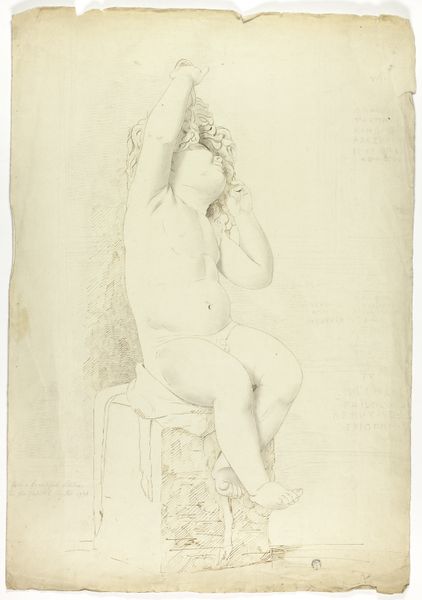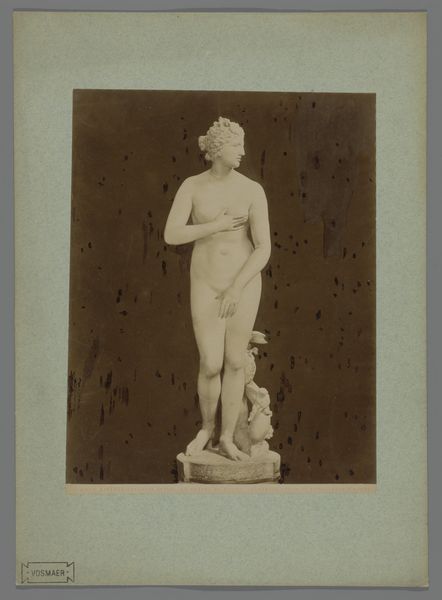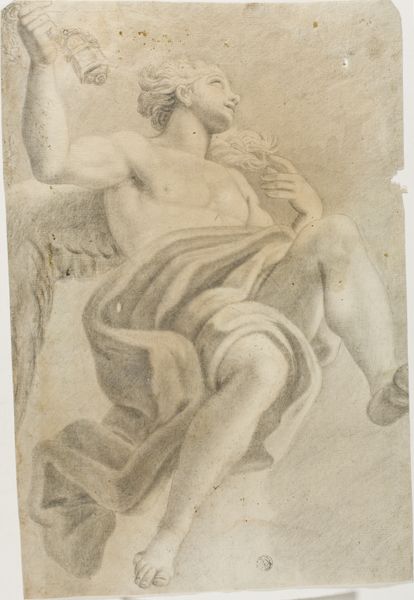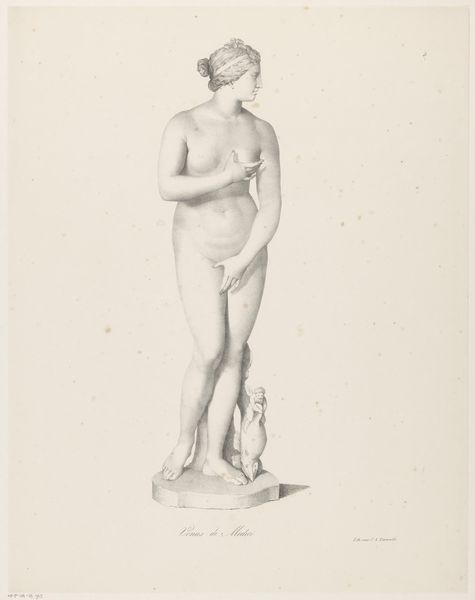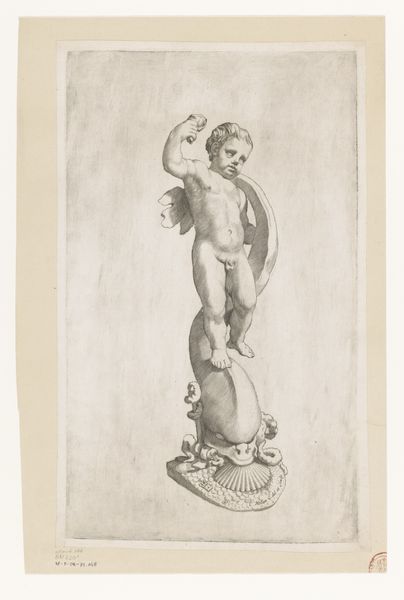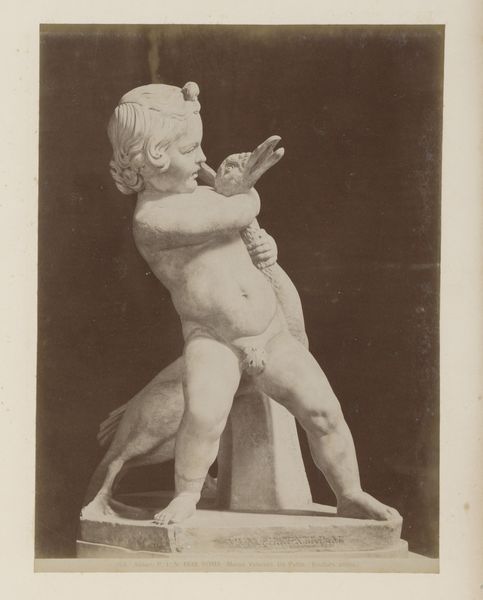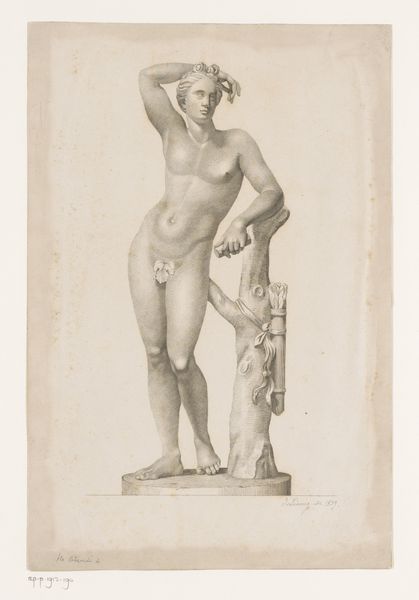
Antique Statue of Seated Putto Holding Mask of Silenus 1775
0:00
0:00
drawing, print, paper, pencil, chalk
#
drawing
# print
#
classical-realism
#
charcoal drawing
#
figuration
#
paper
#
pencil drawing
#
pencil
#
chalk
#
history-painting
#
academic-art
#
nude
Dimensions: 539 × 370 mm
Copyright: Public Domain
Editor: We're looking at "Antique Statue of Seated Putto Holding Mask of Silenus," a drawing by John Downman, from around 1775, here at the Art Institute of Chicago. The textures of chalk and pencil on paper are very delicate. It has such a still, quiet presence. How do you approach this kind of classical subject matter? Curator: Well, let’s consider the context. In 1775, interest in classical antiquity was huge, driving artistic production and collecting. This wasn’t just aesthetic; it was deeply tied to ideas about civic virtue, political order, and cultural authority. Artists were studying ancient sculptures to understand ideal form, yes, but also to connect their own moment to what they saw as a glorious past. Think of the political implications: what does it mean to align one’s society with the perceived values of the Roman Republic? Editor: So, the artist isn’t just drawing a cute baby angel? Curator: Exactly. The 'putto,' or cherubic figure, became popular during the Renaissance. Even seemingly innocent imagery like this carried ideological weight, promoting certain cultural values linked to ideal beauty and historical narrative. It invites us to ponder what Downman, and his audience, might have sought to gain from aligning themselves with the classical world. Editor: And the mask that it's holding? What does that suggest? Curator: Silenus was often depicted as a drunken old man, a companion of Dionysus, associated with revelry and wisdom gained through experience. The putto, in holding that mask, may be a comment on innocence confronting the complexities or follies of adulthood. Maybe a hint of satire within the idealized form? Who, exactly, is masking what, here? Editor: It's so interesting how this seemingly simple sketch opens up into such a complex commentary on culture. Curator: Precisely! Art doesn't exist in a vacuum. Examining its historical, social, and political context reveals layers of meaning often missed at first glance.
Comments
No comments
Be the first to comment and join the conversation on the ultimate creative platform.
